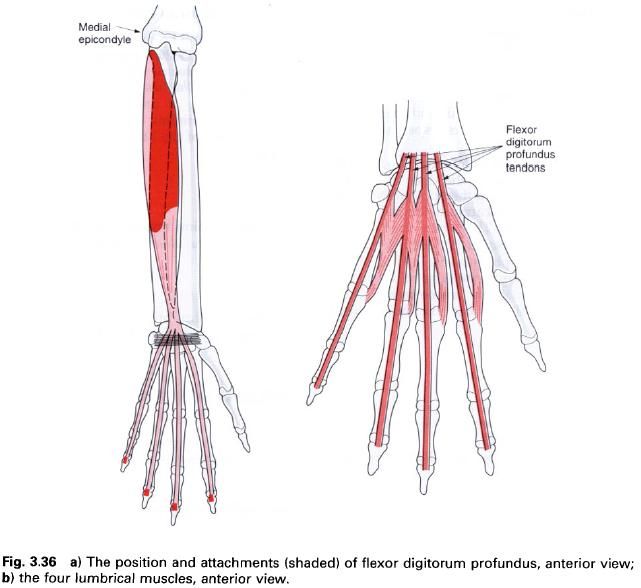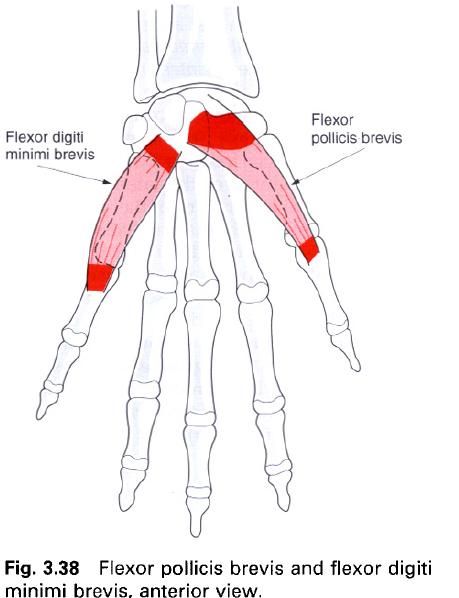Lumbricals
Flexor digiti minimi brevis
Lumbricals
The lumbricals are four small, round muscles
found in the palm in association with the deep flexor tendons of the fingers.
The lateral two lumbricals are frequently unipennate arising from the lateral side of the flexor digitorum
profundus tendons, passing to the index and middle fingers. The medial two
muscles are bipennate, arising from the adjacent sides of the profundus tendons of the middle and ring
fingers, and the ring and little fingers.
From this proximal attachment the muscles pass
distally, anterior to the deep transverse metacarpal ligament and then
obliquely on the lateral side of the metacarpophalangeal joint of the finger
concerned. They then attach to the lateral
edge of the dorsal digital expansion
at the side of the proximal phalanx. A few fibres make their way to the bone of
the middle phalanx, but the majority can be traced to the base of the distal phalanx
via the extensor expansion.
Nerve
supply
The nerve supply varies, but the most common
arrangement is for the lateral two lumbricals to be supplied by the median nerve, root value T1, and the
medial two by the ulnar nerve, root
value T1.
Action
The lumbricals in both hands and feet are
unique muscles as they pass between the flexor and extensor tendons. Their
anatomical position means that they flex the metacarpophalangeal joint, and
extend both interphalangeal joints of the corresponding finger, the “lumbrical
action”. In theory the lumbricals should be able to rotate their respective
fingers at the metacarpophalangeal joint. However, this appears to be well
marked only in the index finger so that the pad faces medially. The first
dorsal interosseus muscle is also involved in producing this movement.
Functionally, the lumbricals are involved in the coordination of complex
activities of the fingers which involve movements of both flexion and
extension, for example as in writing. As a group they have major functional
significance in the dexterity of the hand, which is further enhanced by their
rich sensory innervation.
Flexor digiti minimi brevis
Flexor digiti minimi brevis is a muscle which
is sometimes absent. When present it lies on the lateral side of abductor
digiti minimi, arising from the hook of
the hammate and the adjacent flexor
retinaculum. It inserts, together with abductor digiti minimi, into the base of the proximal phalanx of the little finger on its ulnar side.
Nerve
supply
Flexor digiti minimi brevis is supplied by the
deep branch of the ulnar nerve, root
value T1.
Action
Flexor digiti minimi brevis flexes the
metacarpophalangeal joints of the little finger.











0 коментара:
Постави коментар